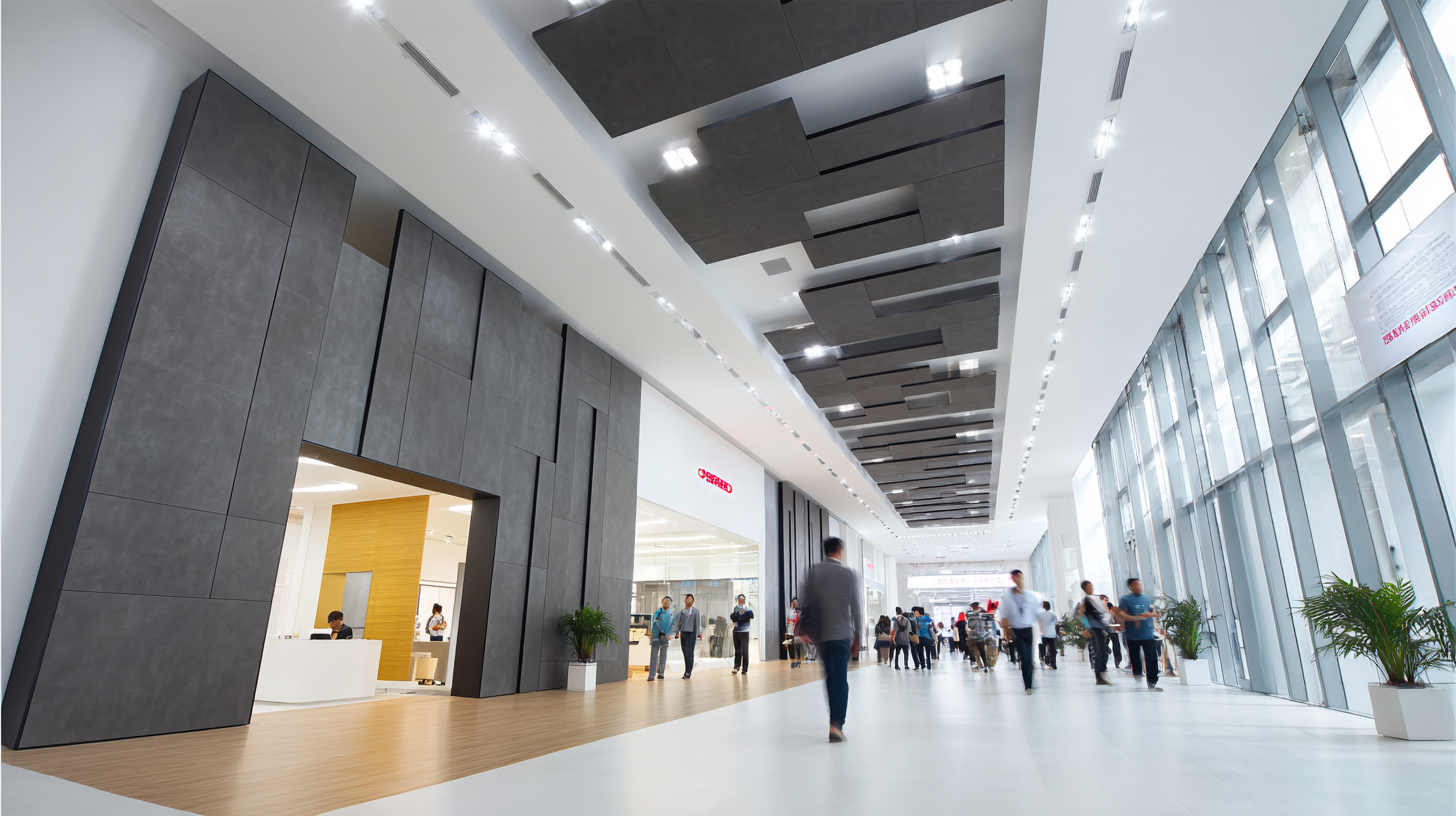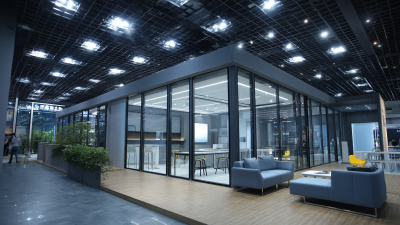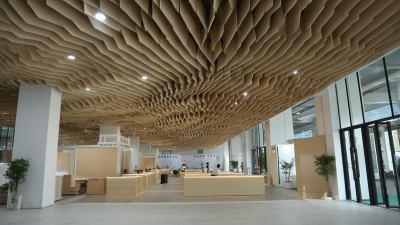Exploring the Market Trends of Sound Absorbing Wall Panels at 2025 China Import and Export Fair
As the demand for effective noise control solutions continues to rise, the market for sound absorbing wall panels is gaining significant momentum. According to a report by ResearchAndMarkets, the global sound absorption materials market is projected to reach $18.54 billion by 2025, with sound absorbing wall panels playing a pivotal role in this growth. The 138th China Import and Export Fair in 2025 serves as a vital platform for industry stakeholders to explore the latest innovations and trends in sound absorbing wall panels. With urbanization and industrialization prompting an urgent need for acoustic solutions, these panels are increasingly utilized in a variety of settings, from commercial buildings to residential developments. This fair will showcase cutting-edge designs and materials that not only enhance aesthetic appeal but also improve sound quality in various environments, making it a crucial event for discerning trends in this dynamic market.

Market Overview of Sound Absorbing Wall Panels at the 2025 China Import and Export Fair
The 2025 China Import and Export Fair is poised to showcase a variety of innovative products, with sound absorbing wall panels emerging as a notable trend in the market. These panels, designed to enhance acoustics in spaces ranging from offices to theaters, are gaining traction due to their practical applications in noise control and aesthetics. As urban environments become increasingly congested, the demand for effective noise reduction solutions is paramount, making the market for sound absorbing wall panels more relevant than ever.
Tips for buyers attending the fair include evaluating the performance metrics of different panel materials, such as their Noise Reduction Coefficient (NRC) ratings. Understanding the installation requirements and maintenance of these panels can also significantly impact their effectiveness and longevity. It’s advisable to consider sustainable options, as eco-friendly materials are becoming a focal point for many consumers, offering both environmental benefits and aesthetic appeal.
As the fair progresses, attendees should engage with manufacturers to learn about the latest technological advancements in sound absorbing panels. Demonstrations of acoustic performance can provide valuable insights, helping buyers make informed decisions and paving the way for innovative designs that blend functionality with modern interior décor trends.

Key Drivers Influencing Demand for Sound Absorbing Wall Panels in 2025
In recent years, the demand for sound absorbing wall panels has surged, influenced by various key drivers. As urbanization accelerates, the need for effective noise control solutions in residential and commercial spaces becomes paramount. The Industrial Noise Control Market, for instance, is expected to grow considerably, with a projected market size hitting USD 10.49 billion by 2034, up from USD 6.82 billion in 2025. This highlights a growing awareness of the impact of noise pollution and the essential role of sound absorbing materials in mitigating this issue.
Moreover, trends in construction and interior design further propel the demand for sound absorbing wall panels. Designers increasingly incorporate these panels to enhance acoustic comfort while contributing to aesthetic appeal. The building envelope market is also witnessing growth, projected to reach USD 189.73 billion by 2033, indicating robust expansion in related sectors that emphasize noise control as part of building design and functionality.
**Tip:** When selecting sound absorbing wall panels, consider factors such as material type, aesthetic compatibility, and installation ease to ensure optimal performance and integration into your space. Additionally, keep an eye on emerging technologies that may enhance the acoustic properties of materials used in construction, offering even better solutions for noise reduction.
Exploring the Market Trends of Sound Absorbing Wall Panels at 2025 China Import and Export Fair
| Dimension | 2023 Value | 2024 Forecast | 2025 Forecast |
|---|---|---|---|
| Global Market Size (in USD billion) | 2.5 | 3.0 | 3.8 |
| Annual Growth Rate (%) | 8.0 | 20.0 | 26.7 |
| Demand from Construction Sector (%) | 65 | 70 | 75 |
| Key Regions (Market Share %) | Asia: 40, Europe: 25, North America: 20, Others: 15 | Asia: 42, Europe: 24, North America: 19, Others: 15 | Asia: 45, Europe: 23, North America: 18, Others: 14 |
| Popular Materials (%) | Fiberglass: 50, Acoustic Foam: 30, Wood: 20 | Fiberglass: 55, Acoustic Foam: 28, Wood: 17 | Fiberglass: 60, Acoustic Foam: 25, Wood: 15 |
Innovative Technologies and Designs in Sound Absorbing Wall Panels at the Fair
The 2025 China Import and Export Fair is set to unveil the latest advancements in sound absorbing wall panels, showcasing innovative technologies and designs that are reshaping the acoustic treatment landscape. With growing awareness of the importance of noise control in both residential and commercial spaces, the demand for effective sound absorbing solutions has surged. According to a recent market report, the global soundproofing materials market is expected to reach $1.9 billion by 2025, driven by the increasing application of sound-absorbing panels in offices, hotels, and educational institutions.
At the fair, attendees can expect to see striking examples of modern sound absorbing wall panels that not only enhance acoustics but also serve as artistic elements within a space. One notable trend is the integration of sustainable materials, like wool and recycled textiles, which not only improve sound absorption but also appeal to environmentally conscious consumers. This aligns with the rising movement towards greener building practices, where design meets functionality. Innovations in technology also play a crucial role, with companies exploring ways to incorporate smart features into wall panels—allowing users to adjust sound absorption levels dynamically based on their needs. Such advancements promise to elevate the standard of interior environments, making them more accommodating and versatile.
Comparative Analysis of Domestic and International Brands in Sound Absorption Solutions
The sound absorbing wall panels market is poised for significant changes as showcased at the 2025 China Import and Export Fair.
A comparative analysis of domestic and international brands reveals diverse approaches to sound absorption solutions tailored for various industries. With the global acoustic panel market projected to grow from USD 13.1 billion in 2024 to USD 24.2 billion by 2034, it is evident that brands are focusing on innovative materials to meet rising demand.
Tips: When selecting sound absorbing wall panels, consider the specific application and desired sound absorption coefficient. Different environments, from concert halls to open offices, may require unique solutions to achieve optimal acoustic performance. Additionally, explore options that incorporate eco-friendly materials, enhancing both sustainability and sound control.
In terms of industry trends, the industrial noise control market is set to expand significantly, moving from USD 6.88 billion in 2025 to USD 12.7 billion by 2035. The emphasis is on multi-functional products that not only reduce noise but also offer sound isolation and vibration control. Brands are increasingly highlighting these features to appeal to a broader audience looking for comprehensive noise management solutions.
Future Projections for Sound Absorbing Wall Panel Market Growth and Opportunities
The sound absorbing wall panel market is poised for significant growth in the coming years, with projections indicating an increase from $6.06 billion in 2025 to approximately $7.65 billion by 2035. This trend underscores a rising awareness regarding industrial noise control, which has become essential in various sectors. The global industrial noise control market is expected to expand at a robust CAGR of 6.3%, highlighting the increasing investment in acoustic solutions.

Tips for maximizing the effectiveness of sound absorbing wall panels include choosing materials with higher NRC (Noise Reduction Coefficient) ratings and considering the installation method to optimize sound absorption. Incorporating these panels into both new constructions and renovations can greatly enhance acoustic comfort, providing a more serene environment.
Additionally, as the demand for sustainable building materials grows, sound absorbing wall panels are becoming integral to eco-friendly designs. Designers and builders should explore innovative production technologies that not only offer aesthetic benefits but also contribute to environmental sustainability. This approach will likely lead to more opportunities in the market as industries increasingly seek efficient noise control solutions.



